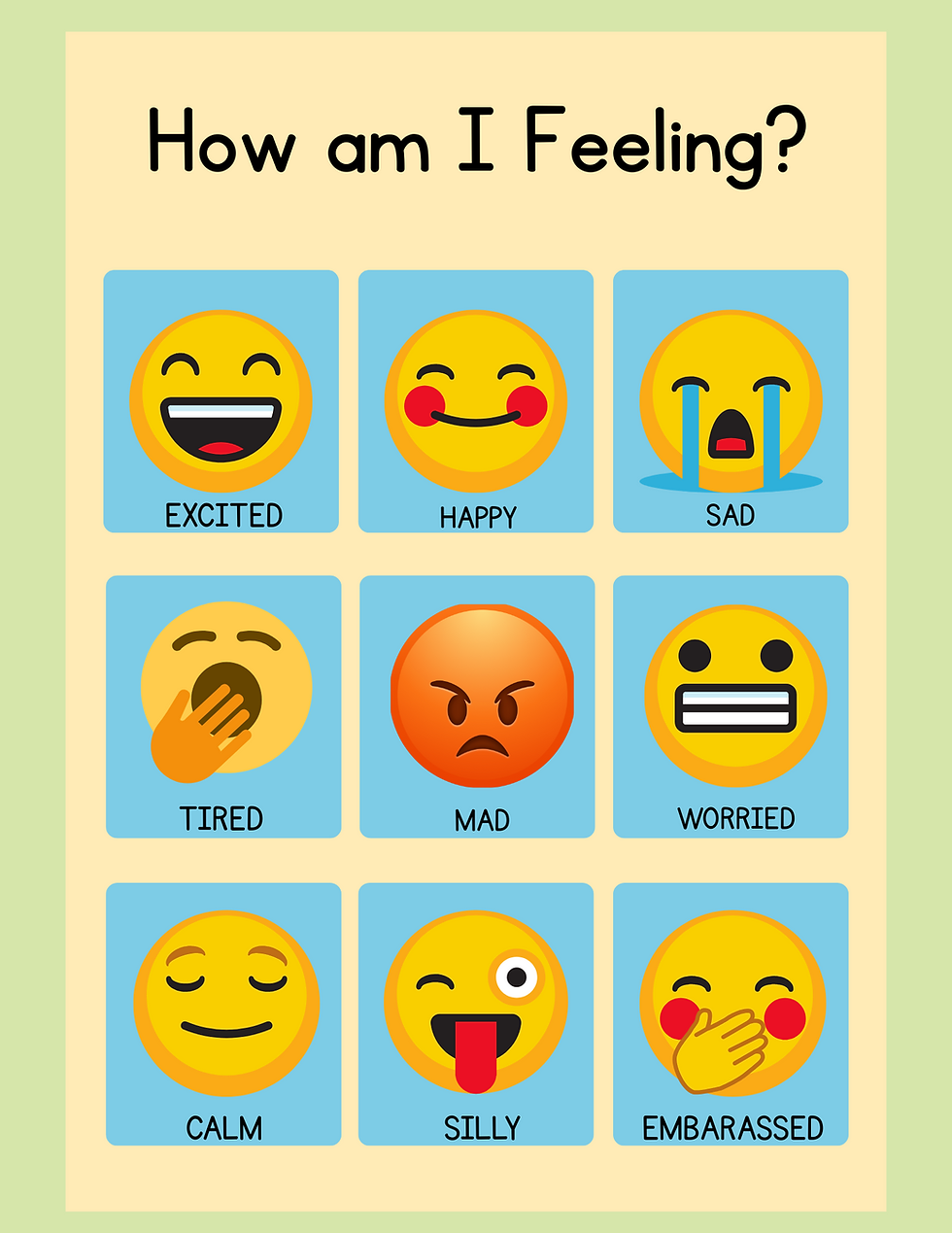Navigating Big Feelings in Young Children: Strategies for Support and Understanding
- Kellie Smith

- Jun 17
- 3 min read
Updated: Jul 21
By Kellie Smith | Little Learning Table
Let’s face it, young children can have very big feelings. And those big emotions often show up when we least expect them.
Sometimes we see them coming: a toy gets snatched, a transition is about to happen, or a snack is denied. Other times, those feelings bubble up without warning, leaving us feeling caught off guard or unsure of what to do next.
Here’s the good news: big feelings are completely developmentally appropriate for young children. And you are not alone in navigating them.
Even as an early childhood educator with years of experience, I’ve found myself puzzled by emotions and behaviors that arise in the classroom. In those moments, like most caregivers and parents, I’ve wanted a quick fix—something to make the feelings stop. But here’s the thing: helping children manage their emotions isn’t about stopping the feeling. It’s about guiding them through it.
Big Emotions Need Practice
Just like learning to ride a bike or tie their shoes, learning to handle big emotions takes practice. Children need time to try different strategies before finding the ones that work for them. We can support them by creating safe moments for that practice—and by modeling what it looks like to move through a tough feeling.
Let me give you an example.
A Real-Life Moment from My Kindergarten Classroom
One year, I had a kindergartener who would get upset when things didn’t go her way in social situations. If her peers didn’t follow her plan during play, she’d stomp her feet, cry, scream, and sometimes say unkind things.
In these moments, if she were too upset to talk, I’d invite her to sit in our classroom’s calm spot or take a break in a quieter place outside. Once she was calm enough to speak, we’d walk through these steps together:
1. Calm the body - First, I’d help her get calm. That meant creating a peaceful moment, whether by sitting quietly, taking deep breaths, or just having a minute away from the group.
2. Name the feeling - When she was ready, I’d say something like:“Hi [Child’s Name], I noticed you were crying and stomping on the playground. Now that we can talk, do you want to tell me what you were feeling in that moment?”If she couldn’t find the words right away, I’d wait (usually about 5 slow Mississippis) before gently offering a few options: Were you feeling sad? Angry? Frustrated?
3. Problem-solve together - Next, we’d discuss what she could do differently next time. I’d suggest one or two ideas, and ask her to come up with at least one of her own. Giving children a voice in the solution helps build independence and self-regulation.
4. Repair the relationship (if needed)If she had hurt a friend or disrupted play, we’d talk about how to make it right. That might mean helping to rebuild a knocked-over structure, apologizing, or asking if her idea could be tried tomorrow instead.
Why This Matters
By walking through these steps with your child, you’re helping them build two incredibly important life skills:
Talking about their feelings
Taking responsibility for their actions
These are skills they’ll use again and again—at school, at home, and as they grow into happy, well-adjusted adults.
Want a Simple Way to Help Your Child Name Their Feelings?
At the bottom of this post, you’ll find a Feelings Chart with easy-to-recognize emojis to help your child identify how they're feeling. Visual tools like this can be incredibly helpful, especially for young children who are still learning the language of emotions.
You can use the chart or help your child create something similar, keep it on your fridge, or take a photo of it to keep with you at all times to reflect together:"Can you point to the face that shows how you're feeling right now?"
Over time, this simple practice builds emotional awareness and helps your child feel more confident talking about their inner world. It’s a small tool that can make a big difference.
The Takeaway
Big feelings can be messy, loud, and hard to navigate, but they’re also normal and necessary.
With your support, your child can learn to recognize and manage their emotions, express their feelings, and navigate them with confidence and care.
You’ve got this. And I’m here to help.
Stay tuned; next time, we’ll discuss how to create a calming space at home that invites reflection and emotional regulation.




Comments